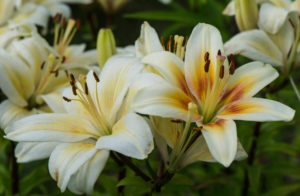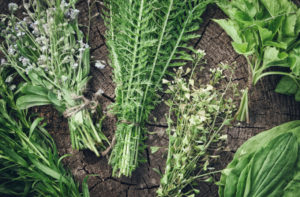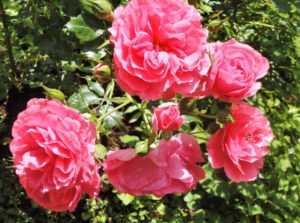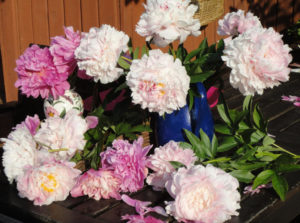
Pelargonium, which came to us from southern Africa, is perhaps the most common pot plant. However, she successfully caught on not only on the window, but also in the garden. With good care, pelargonium blooms all summer. Increasingly, the eyes of landscape designers are turning in the direction of this flower, and there are several reasons for this: the possibility of planting in forms, a relatively simple care and a bright addition to any flower arrangement.
Pelargonium belongs to the Geranium family and can be a semi-shrub or herb. Cultivated as a perennial. Her flowers are varied in color, gathered in umbrellas or shields. Some varieties have huge round terry “caps” of flowers. Pelargonium comes in straight, branched or creeping stems, it has very beautiful, ornamental leaves.

Pelargonium planting
Despite the fact that pelargonium is a perennial plant, in winter in the middle lane it freezes out, therefore there are subtleties in its cultivation.
In order for Pelargonium to bloom all summer, it needs to create appropriate conditions. Choose a little soil with an acidic or neutral reaction, its composition should be necessarily light, the presence of peat and river sand favorably affects the plant. In the fall, when you dig up the soil, add humus and mineral fertilizers.

Pelargonium is good for irrigation, so it should be watered moderately and not allowed to dry out the soil. Although drought can endure normally.
But even in the open sun it is better not to plant it: the optimum temperature for growth and development in pelargonium is + 15 ° C, therefore the half-solar side is considered to be the best, or it will still have to be tinted.
Depending on the species, pelargonium has a number of individual features, but the principle of planting and care is largely the same. To root the green cuttings in the garden, you need to plant them in a mixture of peat and river sand.
Pelargonium care
Rest period
Getting into the garden, pelargonium blooms all summer. But like any living organism, it gets tired, so until the spring let the plant rest for about 1.5-2 months, put it into a state of rest. To do this, do not water Pelargonium and do not feed with mineral fertilizers. By spring, she wakes up and gives flowering again. There are many opinions about wintering Pelargonium. But I would not dare to leave her in the garden: for the winter, the bush must be transplanted into a pot and taken home.

Fertilizers
During the period of active pelargonium use complex fertilizers for flowering plants.
Pruning
In the spring, to pelargonium actively moved to the growth and pleased with abundant lush flowering, you can pinch the tops of the shoots. But the tops are not necessary to throw away, they can be rooted and get new plants.

Pelargonium breeding
Pelargonium is propagated by seeds and vegetatively (green cuttings).
Many lovers root cuttings right in the winter, for this they plant a cutting in sand or perlite and moisturize. Cut cuttings from the queen cells that winter at home at a temperature not higher than + 12 ° C. Cuttings root in January at + 16 ° C, already at this temperature, the plant begins to give roots. Next, the temperature is raised to + 20 ° C, the formation of a complete root system of the cutting occurs about 3 weeks. When the root system is formed, transplant the young plants into small pots, bring them into the greenhouse for hardening and rearing. You can doraschivat and on the window.

Seeds need to be sown in containers, too, in winter, from December to February, the soil mixture should consist of river sand and peat or one peat. Waiting for seedlings will have about 3 weeks, all this time the soil should be regularly moistened. Top container is preferably covered with foil. When the seedlings reach the phase of three true leaves, they dive into separate containers. To make the plant more bushy, pinch it over the 6th leaf.
Types of Pelargonium
Pelargonium zonale
The contoured leaves with a pattern of this perennial pelargonium can be light or dark green. In a number of well-known sources, it is written that this species is annual, but I would say that it simply does not hibernate in open ground. I dig and transplant into a pot, so even in winter my pelargonium blooms.

Pelargonium peltatum
The darling of landscape designers for vertical and horizontal gardening. Succulent fleshy leaves, sometimes framed by a red border, attract attention. They do not smell and have no pubescence, but they look like ivy leaves in shape. Shoots of this species are falling, up to 90 cm long. Although there may be 30 cm depending on the variety.





Leave a Reply